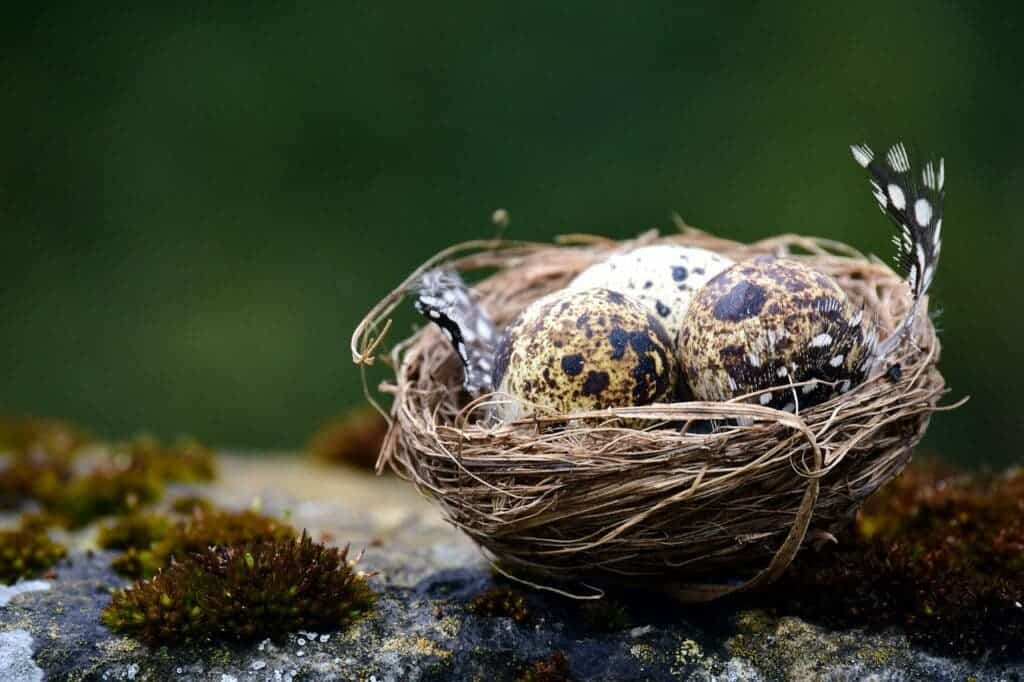Many species of birds seem to be nesting and laying eggs much earlier than they did a hundred years ago — almost one full month earlier. The culprit seems to be climate change.

Spring is upon us, and soon, so will newly-hatched birds. But new research from the Field Museum of Natural History in Chicago, Illinois, says that at least some of these baby birds will arrive much earlier than they would have one hundred years ago. Roughly one-third of the North American species of birds included in this study were nesting and laying eggs on average 25 days earlier than last century. As far as we can tell, this shift is caused by changes in temperatures, the onset of spring, and precipitation caused by man-made climate change.
Birds, but earlier
“Egg collections are such a fascinating tool for us to learn about bird ecology over time,” says John Bates, curator of birds at the Field Museum and the study’s lead author. I love the fact that this paper combines these older and modern datasets to look at these trends over about 120 years and help answer really critical questions about how climate change is affecting birds”.
“Once I got to know our egg collection, I got to thinking about how valuable that collection’s data are, and how those data aren’t replicated in modern collections,” he says.
The Field Museum’s egg collection is housed in a small room, filled floor-to-ceiling with various deposit spaces containing hundreds of eggs — rather, the cleaned and dried shells of eggs. Most of these were collected over or around one century ago, and each comes in its own box with labels describing the species they belonged to, the place they were retrieved, and the precise day of collection. The specimens start tapering off around the 1930s, when academic egg-collecting went out of fashion. All of these specimens were used in the study.
Bates also used data collected by his colleague Bill Strausberger, a research associate at the Field, who has worked for years on cowbird parasitism, recording nesting and egglaying dates from bird nests at the Morton Arboretum in the Chicago suburbs alongside other useful information.
“He had to get out there every spring and find as many nests as he could and see whether or not they were parasitized, and so it occurred to me that he had modern nesting data,” says Bates.
Evolutionary ecologist Chris Whelan at the University of Illinois at Chicago helped flesh out the findings with nesting data pertaining to songbirds, collected in Chicagoland starting with 1989. Along with his team, he used mirrors mounted on long poles to look into high-up nests and mark down egg-laying and hatching dates without disturbing the animals.
Overall, the datasets the team had at their disposal included dates from (roughly) 1880-1920, and another from 1990 to 2015. Mason Fidino, a quantitative ecologist at Chicago’s Lincoln Park Zoo and a co-author of the study built computer models to analyze the data and piece together what was happening between these two datasets based on statistical methods together with the differences in sampling methods between the datasets.
“Because of this uneven sampling, we had to share a little bit of information among species within our statistical model, which can help improve estimates a little bit for the rare species,” says Fidino. “We all realized rather quickly that there may be some outliers present in the data, and if not accounted for, could have a rather large influence on the results. Because of this, we had to build our model to reduce the overall influence of any outliers, if they were present in the data.”
Now, on to the results. The authors report that among the 72 species that were present in both datasets in the Chicagoland region, about one third have been nesting progressively earlier. Among these species, the first eggs were being laid 25.1 days earlier on average than one century ago.
Their hypothesis was that rising mean temperatures were driving this earlier nesting behavior, but the authros were unable to obtain consistent temperature data for the region that would cover the earlier dataset. So they used carbon dioxide (CO2) levels in the atmosphere as a proxy. These, unlike temperature, are well documented from various sources, chief of them ice-cores obtained from glaciers, which capture and store atmospheric air virtually indefinitely.
The team found that CO2 levels in the atmosphere correlate well with the changes in egg-laying dates. Although the actual changes in temperature are small, around a few degrees, they would be enough to cause flowers to bloom and insects to emerge earlier, which would mean that food would be available earlier for birds. Many species of birds eat insects — the majority of those in this study, as well — whose seasonal behavior is strongly influenced by climate. In turn, what these creepy crawlies do dictates what birds do.
“Global climate change has not been linear over this nearly 150-year period, and therefore species may not have advanced their lay date [in a non-linearl fashion] as well. Therefore, we included both linear and non-linear trends within our model,” says Fidino. “We found that the simulated data was very similar to the observed data, which indicated that our model did a decent job.”
The shifting of nesting days might signal that the birds of this area are competing for food and resources in a way that they didn’t historically need to do, and are shifting their breeding season to adapt to this increase in competition. The findings also serve as a warning regarding the unseen dangers of climate change, which is putting wildlife under great pressure.
The paper “Climate change affects bird nesting phenology: Comparing contemporary field and historical museum nesting records” has been published in the Journal of Animal Ecology.


